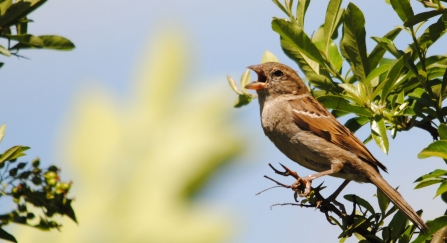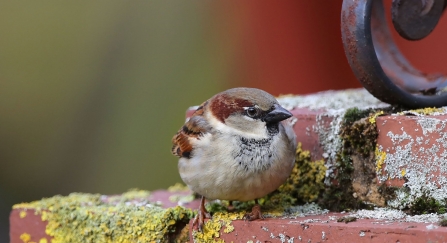In the present sunny weather, the surge of spring is underway and a loud chorus of birdsong fills the house. A large quarrel of house sparrows has been visiting the garden; foraging on the ground, in the hedges and on the feeder. Their distinctive, perky, loud chirps and churrs have filled the garden with a flurry of pugnacious commotion.
It’s a treat to watch them, especially when you see them in the birdbath with individuals waiting around the edge of the bowl for their turn. Then after much animated activity, they perch together and regail us with prolonged and very loud communal chirping. Sparrows; so full of bustling life.



